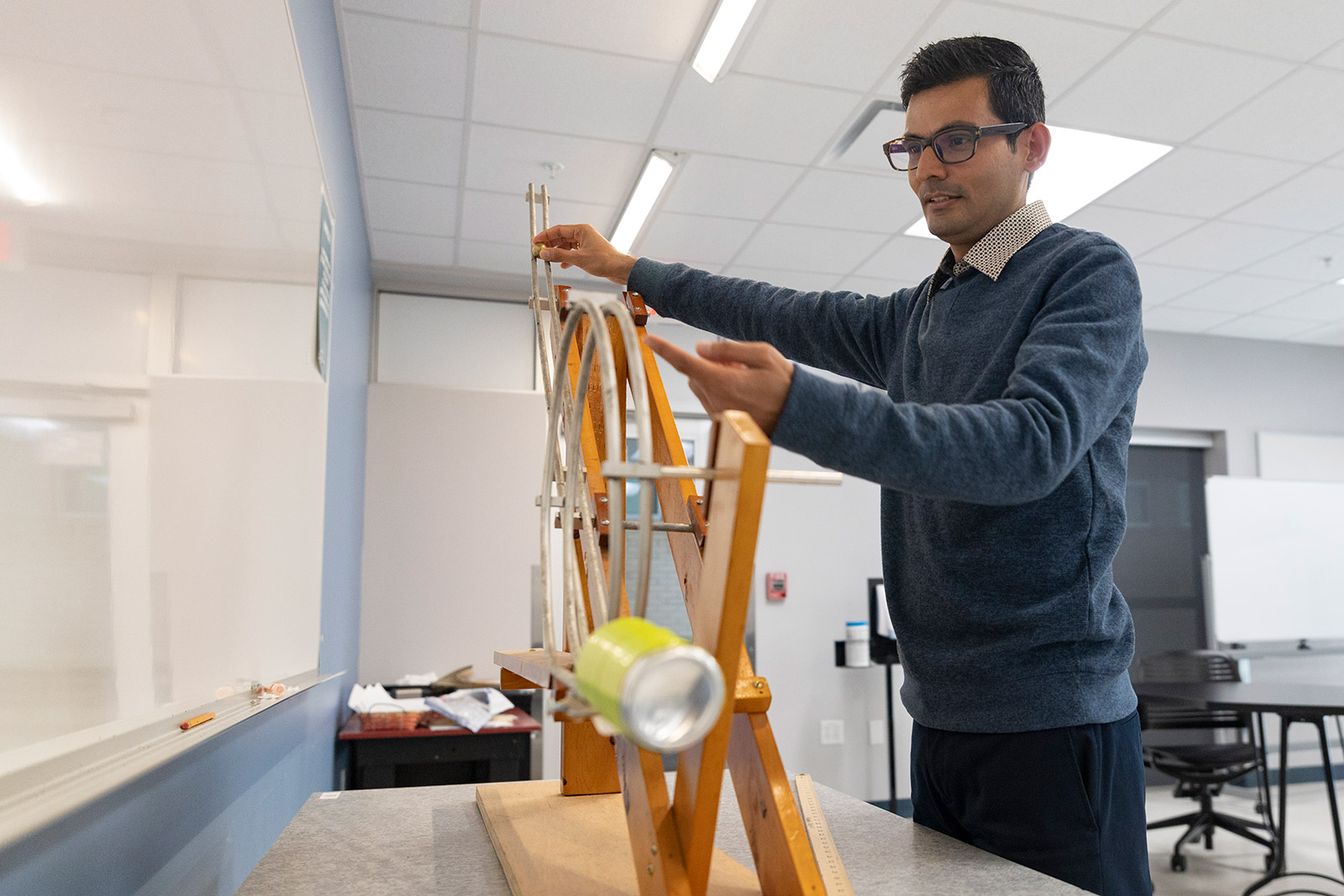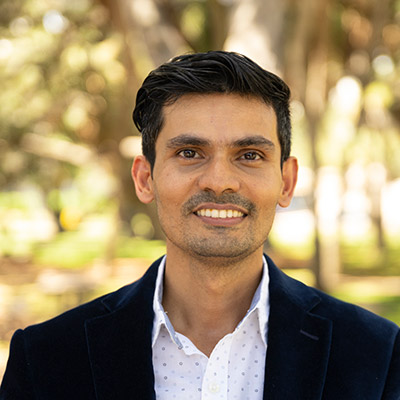Assistant Professor of Physics Basu Lamichhane, Ph.D., who is beginning his first year at Eckerd College, is searching for tiny particles that are not only invisible, they’re hypothetical. And yet these elusive objects might account for a vast portion of the matter in the universe.
Lamichhane has been working with a group of researchers who are trying to find so-called “sterile” neutrinos, which are hypothetical particles believed to interact only via gravity. The search for sterile neutrinos is an active area of research in particle physics. “This research has the potential to discover changes to the basic particle content of the Standard Model, which would have wide implications in science,” Lamichhane explains.
“If we can explore more about this particle, it may help answer one of the most important questions in physics … What is dark matter? According to NASA, our universe is massive and expanding, and only 5% is visible matter. Dark matter or dark energy makes up the rest. Sterile neutrinos could help define dark matter.”
Before coming to Eckerd, Lamichhane served as a visiting assistant professor of physics and astronomy at Earlham College in Indiana. He earned his undergraduate degree in Nepal before receiving his master’s and doctorate degrees in physics from Missouri University of Science and Technology.
He and his family arrived in St. Petersburg the third week of August and, courtesy of Hurricane Ian, evacuated a month later. “We absolutely had to leave,” he says. “I had my wife and my 22-month-old son, and if the power went out … We went to a friend’s house in North Carolina. Now I need to get used to getting prepared for a storm.”
Born and raised in Nepal by parents who are farmers, Lamichhane says mathematics and astronomy were passions at an early age. And because of his background, he places a premium on diversity. “The first day of class, everybody explains why they’re in the class and we work on community building,” he says. “When we do group work, I like to make sure each group has students from different backgrounds.
“I complement the accomplishments of famous white male physicists with additional and intentional discussions about the often-overlooked contributions of women and minorities. I tell the students many scientists come from a minority background. I’m one of them. In my Waves and Relativity class, I have four female students and one male. But the textbooks seem to highlight just the male scientists. So I ask the students to write a biography of a scientist from a minority background. What they don’t see in a textbook.
“This serves to address the representation aspect, messaging to students that women and people of color make great contributions to science and should be celebrated.”
Cassandra Guzman, a senior marine science and physics student from Christiansted, U.S. Virgin Islands, is one of the women in Lamichhane’s Waves and Relativity class. “I’m also a minority,” says Cassandra, who identifies as Hispanic American. “It was never brought to my attention about minorities in physics. Is that important? Yes. Historically, physics is more dominated by white males. It’s important that we talk about it, and that Dr. Lamichhane brings it into the class so we all can see the opportunities.
“He’s a great professor,” she continues, “not just because he knows his stuff. He’s so good because he has a different background and he brings that inclusion into the classroom. That’s important.”














